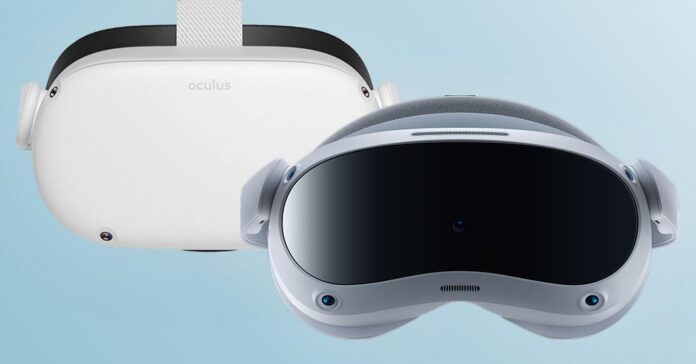With the arrival of the brand new Pico 4 VR headset, important questions arise. Is the new Pico 4 better than the Meta Quest 2? Is the upgrade from the Quest 2 worth it, and which one should you get if you’re aiming for your first standalone virtual reality headset. We’ll try and answer all these questions and more in this detailed standalone virtual reality headsets comparison.
You might also like: Pico Neo 3 VR Headset Hands-On Review! – Is It Worth It?
- Quest 2 and Pico 4 – specs compared
- Design & main differences
- Displays and lenses – the most important part
- Field of view and the screen-door effect
- Operating systems – don’t be fooled!
- Pico 4 – Chinese version vs. Global version
- Game library – Pico 4 at a disadvantage?
- The PCVR experience
- IPD adjustment on both devices
- Color passthrough on the Pico 4
- Pros & Cons
- The verdict – which one should you pick?
- Should you wait for the Meta Quest 3 release?
This web portal is reader-supported, and is a part of the Amazon Services LLC Associates Program and the eBay Partner Network. When you buy using links on our site, we may earn an affiliate commission!
Quest 2 and Pico 4 – specs compared
First things first, here is the raw specification comparison of the two headsets.
| Model: | Pico 4 | Meta Quest 2 |
|---|---|---|
| Photo: |  | 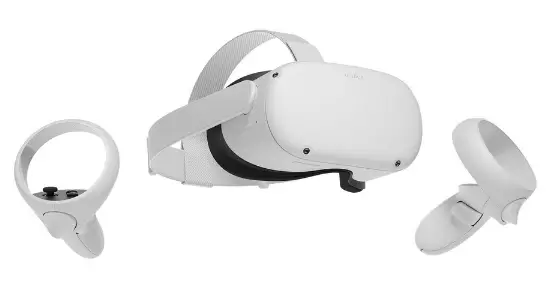 |
| Price: | Amazon | Ebay | Amazon | Ebay |
| Display resolution: | 2160×2160 per 1 eye / 4320×2160 total | 1832×1920 per 1 eye / 3664×1920 total |
| Refresh Rate: | 90 Hz | up to 120 Hz |
| Lenses type: | Pancake | Fresnel |
| Field of View: | up to around 105° | up to around 96° |
| IPD adjustment options: | 58-72 mm – continuous motorized adjustment | 3 fixed IPD presets – 58, 63, 68 mm |
| RAM: | 8 GB | 6 GB |
| Memory options: | 128 GB / 256 GB | 128 GB / 256 GB |
| CPU: | Octa-core Kryo 585 | Octa-core Qualcomm Snapdragon XR2 |
| Tracking: | 6DOF Inside out tracking with 4 cameras. | 6DOF Inside out tracking with 4 cameras. |
| Weight (with headstrap): | ~1.28 lbs (~585g) | ~1.10 lbs (~500 g) |
| Controllers: | Two controllers included. | Two controllers included. |
| Hand Tracking: | Yes. | Yes. |
Design & main differences
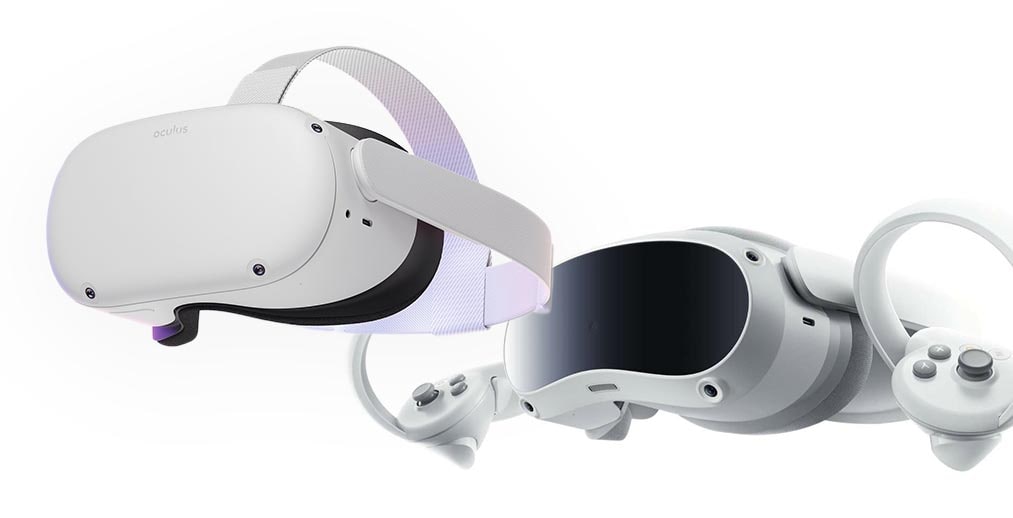
Meta Quest 2 is the well known second generation of the Oculus Quest 1 VR headsets, manufactured by Meta (previously Facebook Inc.).
The Pico 4 on the other hand is a VR headset manufactured by the Chinese company ByteDance – the very same company that owns TikTok – the famous social media platform.
Both Quest 2 and Pico 4 come only in the white variants (the Pico 4 featuring a neat black glossy front plate).
3rd party headstraps are already available for the Quest 2 for quite some time, and the rising popularity of the Pico 4 suggests that customized headstrap solutions designated for it will hit the market pretty soon.
Another important detail here is that while on the Oculus Quest 2 the battery is located in the front of the device (near the screen), while Pico 4 has its battery in the back (so it acts kind of like a counterweight). This makes the Pico 4 be a little bit more comfortable as far as the weight balance goes.
The controllers for the Pico 4 and the Quest 2 are close both in terms of looks and functionality with a slightly different tracking ring positioning.
When it comes to the sound – both devices offer built-in speakers positioned on the headstraps, but for the best experience you really should use headphones. And here comes the much important difference – while the Meta Quest 2 has an audio jack, the Pico 4 doesn’t.
If you’d like to use headphones with your Pico 4, you would need to use appropriate wireless headphones which can transfer audio through Bluetooth with minimal latency – and not all BT headphone models are able to do that.
The battery on both of these isn’t really perfect, in a sense that you most probably won’t be able to squeeze out more than 2 hours of gameplay on either of these headsets. This is just how it is.
If you’re further interested in the battery life on the Quest 2 and Pico 4, you should definitely check out this test by laubox: Pico 4 vs Quest 2 Battery Life DRAIN TEST.
Displays and lenses – the most important part
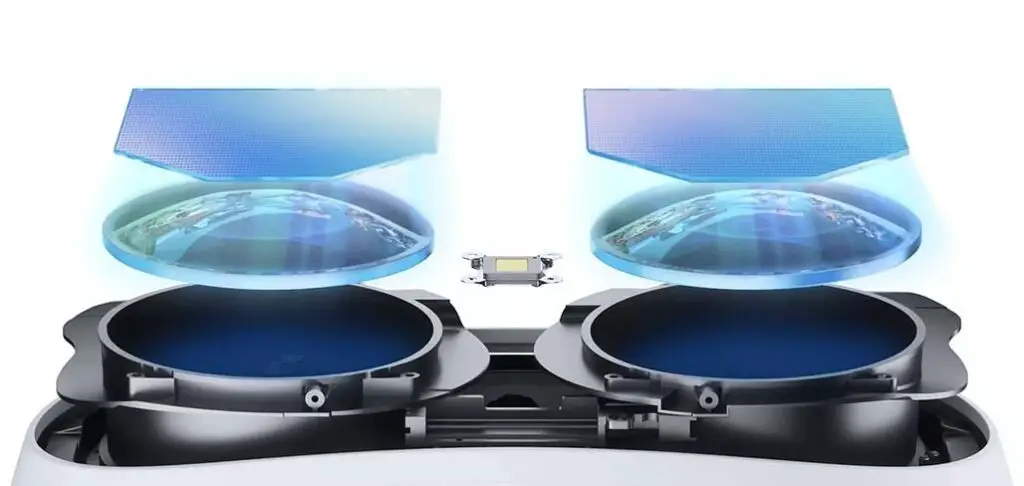
One of the most important advantages of the Pico 4 are its high res display and pancake lenses which are a substantial upgrade from the ones present on the Meta Quest 2.
The jump up in resolution (1832×1920 per eye on the Quest 2 vs. the 2160×2160 per eye on Pico 4) is a small but notable difference.
The pancake lenses used in the Pico 4 not only take up less space inside the device and are lighter, but they also allow for a greater image clarity and slightly better FOV compared to the fresnel lenses present in the Meta Quest 2.
If you want to know more about the actual display quality on both the Pico 4 and the Quest 2, we highly recommend you to check out this through-the-lens video by MRTV – Quest 2 vs. Pico 4 Through-The-Lens Comparison.
Field of view and the screen-door effect
When it comes to the traditional screen-door effect that was present on the original Rift headsets, you don’t have to worry, as both the Quest 2 and the Pico 4 displays are able to convey much clearer image than the one present on the very first generations of virtual reality headsets. The screen-door effect isn’t fully gone, but it has certainly been minimized in comparison to the earlier headset generations.
Speaking of the the FOV though, as with all current headsets (excluding the Pimax VR headsets), the perceivable field of view on most modern goggles is not perfect. While the max horizontal field of view of an average human is somewhere around 210°, most headsets are not able to provide this much degrees of freedom (let alone with sharp image on the edges of the lenses). Keep all this in mind. The FOV on both devices is good when compared to other commercially available VR goggles, but not perfect.
There already exist some FOV extension mod solutions for the Meta Quest 2, involving removing the factory facial interface and replacing it with 3rd party solutions. For the Pico 4, we have to wait for efficient solutions for that, although these are already on the way.
Operating systems – don’t be fooled!
As the Pico 4 is a relatively new product, its operating system is not yet a refined piece of software. Although at first, when comparing the Quest 2 and Pico 4 in terms of the visual aspects of their user interface you may be under an impression that the two are largely the same, this is a false assumption.
While the two software interfaces are very close when it comes to the control layout and the controls themselves, they differ in many places, the most important one being the number of available games which is for now much lower on the relatively new Pico 4.
More on that in the next point about the game libraries on both devices.
Pico 4 – Chinese version vs. Global version
Another thing is that the Pico 4 is actually sold in two different variants: the one meant for the Chinese market, and the one meant for global distribution.
You may come across the Chinese version of the Pico 4, for one when trying to purchase your headset on platforms like Aliexpress, Banggood or Alibaba.
The main disadvantage of the Chinese Pico 4’s is that to access the global version of the Pico store you’d have to do some tinkering (if you’re up for the task). Its advantage could be usually the slightly lower price.
Above you can see a quite recent Reddit post about the Chinese Pico 4 model issues and the possible CN to Global conversion process.
Game library – Pico 4 at a disadvantage?
When it comes to the sheer number of available games, the Oculus Quest 2 store has an established and ever growing library of around 500 games available, while the Pico 4 store had somewhere around 150 games when it was launched and now has around 250 titles available with more to come in the near future.
Depending on the further development of the Pico 4 hardware and its software ecosystem, there might be more popular games and exclusives coming out in the following year.
Currently there are no reliable ways to play or sideload Quest 2 compatible games and .apk files on the Pico 4.
The PCVR experience
With the Meta Quest 2, you can either connect it to your PC using an optional PCVR link cable, the official Air Link feature, or the 3rd party Virtual Desktop App.
The Pico 4 can be used with your PC via a cable connection, the wireless “Streaming Assistant” app (which is quite lacking in terms of streaming quality as of now), or with the very same Virtual Desktop App which offers much better stream stability and better transfer bitrate.
In case of both headsets, the wired PCVR goes through a USB connection, so the transferred image quality won’t be as high as in case of headsets using a DisplayPort connection (for example the HP Reverb G2).
IPD adjustment on both devices
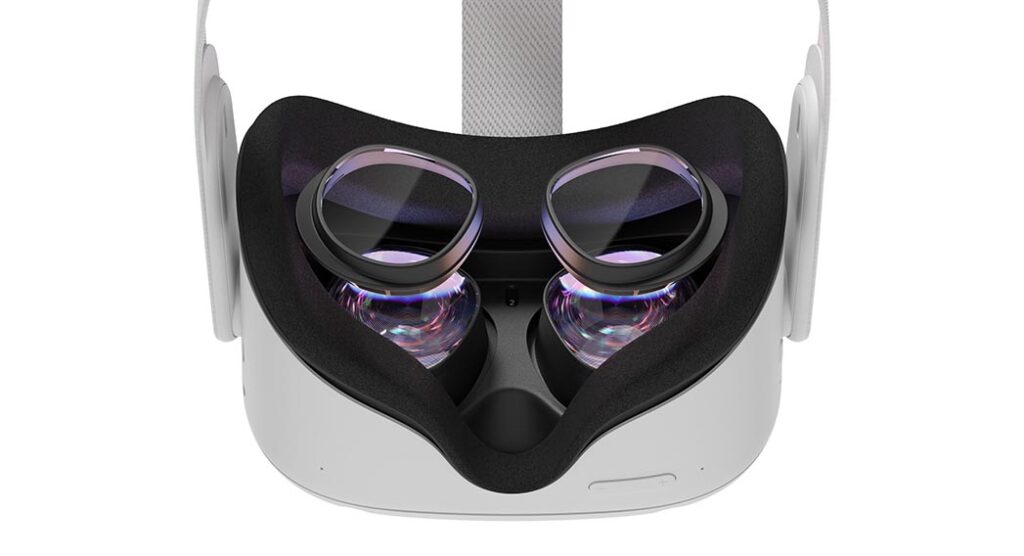
The Meta Quest 2 allows you to adjust your IPD using 3 fixed IPD presets that can be changed using a mechanical switch present on the device. The following IPD settings are available here: 58, 63 and 68 mm. Unfortunately with the way the Quest 2 is designed, you cannot set your IPD anywhere in-between the pre-set numbers without any hacks or modifications to the headset.
The Pico 4 on the other hand offers a quite surprising solution for choosing your desired IPD setting. You can set your IPD from inside the headset, as there are special motors around the lenses that will bring them closer together or farther apart depending on your chosen IPD value. On the Pico 4 the IPD can be set to any value between 58 and 72 mm. Neat!
Color passthrough on the Pico 4
While in the current state of standalone VR technology you shouldn’t expect the passthrough cameras image to be clear and undistorted, the passthrough on the Pico 4 is slightly better than the one on the Quest 2.
Pico 4 offers a higher resolution color passthrough camera image, and although this is quite a nice upgrade, it shouldn’t be a decisive factor when choosing between these two devices.
Pros & Cons
Let’s now go through all the pros and cons of both headsets as a quick summary.
Meta Quest 2
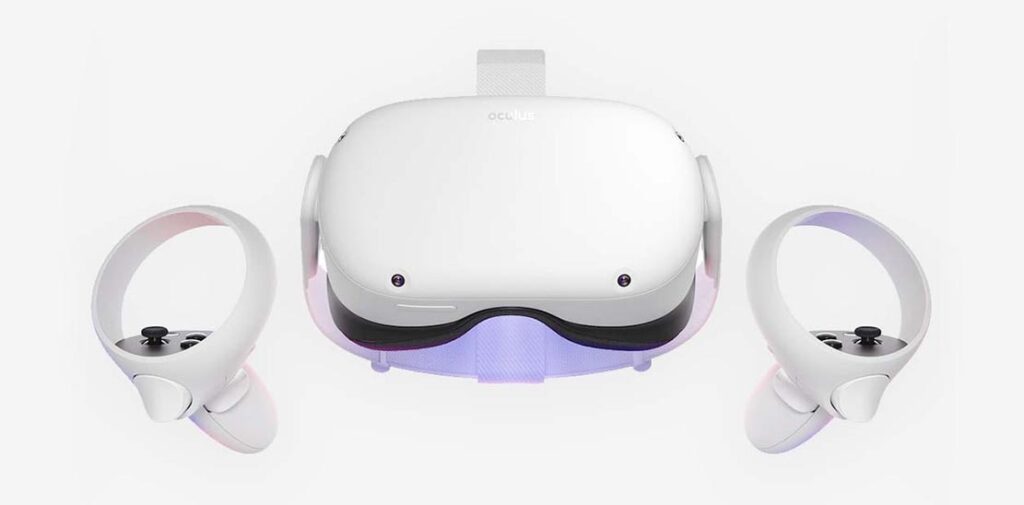
Pros:
- A larger game library and more refined software.
- Quite a few quality exclusive standalone titles (including Resident Evil 4, Beat Saber etc.)
- Lots of useful accessories already on the market.
- Slightly better FOV.
- Higher refresh rates supported (although not all games and apps support 120 hz).
Cons:
- Only 3 fixed IPD settings to choose from.
- Lower quality passthrough cam.
- Battery positioned in the front.
Pico 4
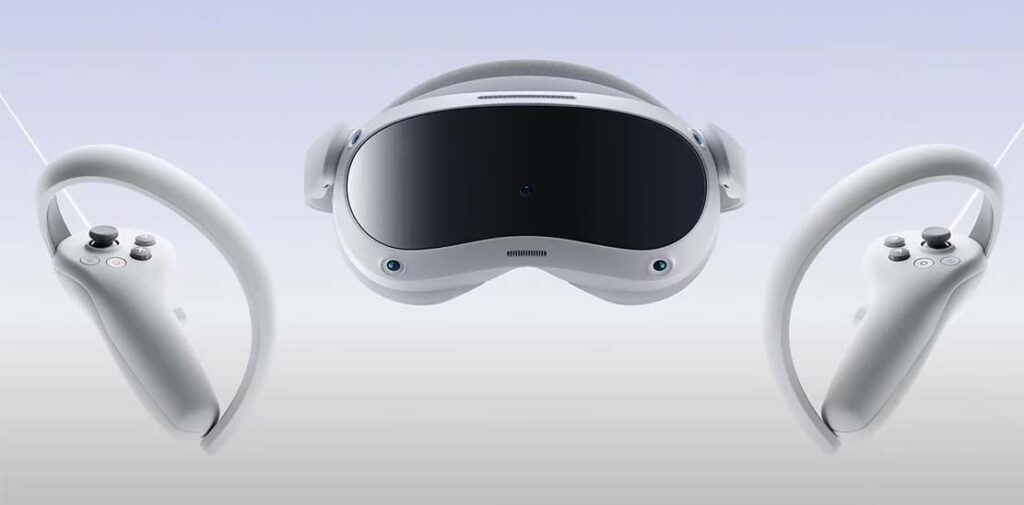
Pros:
- Higher display resolution.
- Pancake lenses – clearer image and a larger sweet spot.
- Motorized high accuracy IPD adjustment slider.
- Said to be more comfortable with the default headstrap.
Cons:
- Wired PCVR could be much improved.
- Default PCVR streaming utility is noticeably worse than using the Virtual Desktop App.
- Software is still a bit crude.
- No audio jack on board.
The verdict – which one should you pick?
If you’re still wondering whether you should choose a brand new Pico 4 over the Meta Quest 2, here is our final verdict.
The Pico 4 has a better quality screen paired with the use of pancake lenses which is a substantial upgrade all by itself. The Quest 2 has a more refined software ecosystem and more native standalone games in its library. If you’re aiming for your first VR headset, while both of these will be more than enough for you, with the Quest 2 you’ll have access to more accessories, guides and how to’s, more games and better support.
With that said, both of these standalone headsets are great pieces of tech which are bound to satisfy you if you’re eager to jump into all the ins and outs of virtual reality with no cables involved!
Should you wait for the Meta Quest 3 release?
Well, remember that with the recent release of the flagship Meta VR headset – the Meta Quest Pro, the likelihood that the upcoming Quest 3 will outclass the “Pro” version of the hardware is rather low. This lets us speculate, that for example the Quest 3 won’t have a high chance to feature a 4k-per-eye display.
The Quest 3 can most likely be expected to come somewhere in 2023, if you can’t wait this long, you can also consider getting either the Quest 2 or the Pico 4, keeping them in good condition and then selling your unit if the Quest 3 turns out to be of better value.
| Meta Quest 2 on Ebay: |
| Pico 4 on Ebay: |
Check out also: Caveblazers – If You Liked Noita (Game Review)

